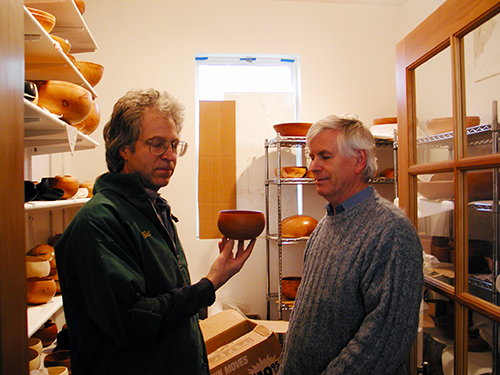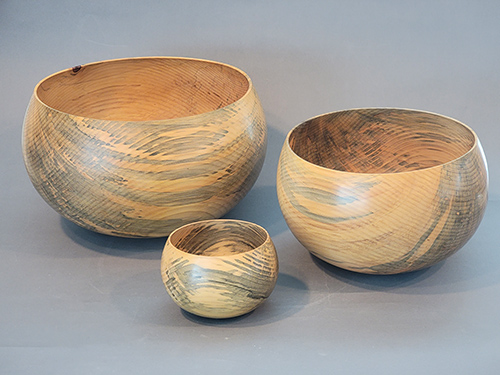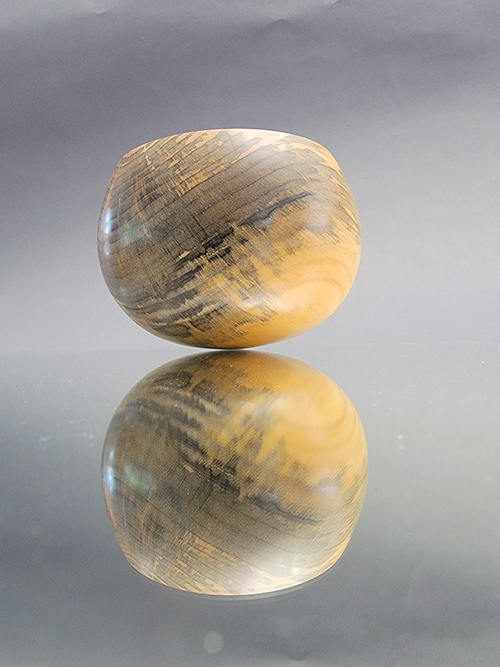 |
| |
 |
Bill Luce, 2006, Monkey puzzle wood, Largest: 8" x 15" (20cm x 38cm)
|
 |
Bill Luce, Renton, WA
Bill Luce, a popular woodturner based in Renton, Washington, known for his relentless pursuit of the “perfect form,” died on May 28, 2022. Following are some remembrances of Bill.
In 2005, I visited Bill Luce (left) in his workshop in Renton, Washington. In his storeroom, he had in excess of 3,000 bowls. On the floor was a piece he was staining black to help him study the form. I am a much more diverse turner, but his striving to produce the “perfect” form was impressive.
~Thys Carstens
Bill opened my eyes about seeing objects. He was giving a demo on the “perfect bowl.” I wondered how a bowl could even have a perfect shape. Bill held up two bowls and asked which was better looking. He then replaced the audience’s least-liked bowl with another. He did that several times and, yes, we could all see that the next one was always slightly more pleasing than the last. Finally, he came to what he felt was perfection, and it was agreed by everyone that this bowl was a true thing of beauty. I was stunned. Bill said it took him 4,000 bowls to find the perfect shape, and this is no exaggeration; I have been to his shop and seen the 3,999 others.
Bill made a graduated set of three “perfect” bowls, and I bought them. He tried to buy them back several times, but I declined. I told him to just make more. But he said he couldn’t—he had lost the intensity needed to reproduce them. Bill was off to the next pursuit of excellence.
~Ron Gerton
I saw Bill Luce demonstrate the “perfect bowl” at the Utah Woodturning Symposium. He spent a large portion of the session discussing form rather than process, and his insights were inspirational. Bill was relentless in his drive for the perfect form. He was most critical of his own work and constantly shared his passion with others. To me, Bill’s legacy for the woodturning community is the reminder to always strive for better.
~Joe Fleming
I watched Bill Luce and Richard Raffan turn round-bottom bowls. Bill was adamant about the process of hollowing: “You must start with a 35-degree gouge, then go to a 45, then a 60, and then an 80 to finish the bottom.” In his opinion, that was the only way to do it. Immediately after his presentation, Richard turned a bowl with whatever gouge was available, and when that angle ran out, he pulled out a scraper to blend the bottom. Bill probably never held a scraper in his life and that’s just how he was.
~John Beaver